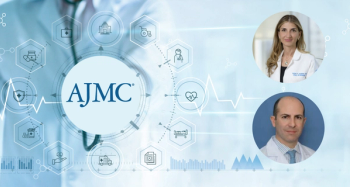
VBID® Value-Based Insurance Design® Newsletter
- March 2022 | VBID® Value-Based Insurance Design®
CMS Official Cites OCM as Example of Biosimilar Success
Purva Rawal, PhD, senior advisor and chief strategy officer, Center for Medicare and Medicaid Innovation, addressed attendees at the Association for Accessible Medicines' Access! annual meeting, held in Orlando, Florida, February 15-16.
CMS’ decision to allow the Oncology Care Model (OCM) to end this summer without a replacement is drawing howls from participating practices, but the OCM drew notice from an official with the Center for Medicare and Medicaid Innovation (CMMI), who discussed how it propelled the uptake of biosimilars in Medicare Part B.
Purva Rawal, PhD, CMMI senior advisor and chief strategy officer, mentioned the successful use of biosimilars in the OCM during her talk before the Association for Accessible Medicines' Access! annual meeting, held in Orlando, Florida, February 15-16.
“Given our interest in making drugs more affordable for beneficiaries and the Medicare and Medicaid program, we at the Innovation Center are exploring the potentially important role biosimilar adoption may have for the success of our value-based payment models,” Rawal told the group, which represents leaders in the generic drug and biosimilars industries.
“Many of you are likely familiar with our Oncology Care Model. It's in its sixth and final year. We're hearing about success in terms of participants prescribing lower-cost biosimilars, achieving savings in total cost of care and maintaining quality outcomes, which is critical. So, we're hoping that these anecdotal reports of success show through in our future evaluation results.”
Rawal said CMS is committed to policies that will expand the use of biosimilars, given the need to make drugs more affordable and “the potentially important role biosimilar adoption may have for the success of our value-based payment models.”
Most of Rawal’s talk focused on the “
“Importantly, we also want to increase the momentum and the movement toward value-based care and reignite that sense of inevitability that many of us felt 10 years ago,” Rawal said.
Those practices taking part in the
Rawal told the AAM how the policy that aimed to give specialty practices, including oncologists, incentives to prescribe biosimilars isn’t working as hoped. Under Medicare Part B, a practice would normally be paid less to prescribe a lower-priced alternative under the average sales price + 6% formula, but the law was written to prevent this revenue drop.
“The statutory payment policy theoretically incentivizes biosimilar use by making the drug add-on amount comparable across the reference biological and each biosimilar product. But this payment approach doesn't ensure that the prescribers’ margin on a biosimilar is comparable to the margin they may be able to obtain on the reference biological,” Rawal said. “So, we're starting to see some market competition, overall lowering of drug prices for biologicals, where biosimilars have been introduced. But the uptake of biosimilars has been slower than we anticipated, as many of you are aware, even with the add-on being based on the reference biologic.”
Barriers to biosimilar uptake are “concerning,” to CMS, and CMMI seeks to remove them, Rawal said. She said some challenges may be related to provider education.
A recent
Rawal credited the AAM for collaborating on ideas to promote biosimilar and generic use. Value-based care, she said, proved its worth during the pandemic and will do so going forward.
“We've seen early evidence that providers in population-based payments and alternative payment models were more resilient,” Rawal said. “That resilience allowed them to continue to provide access to patients, such as through telehealth.
“So, we have new evidence on the value of value-based payment, and value-based care from the pandemic, and we want to use this experience to accelerate our work to drive accountable care.”
Articles in this issue
Newsletter
Stay ahead of policy, cost, and value—subscribe to AJMC for expert insights at the intersection of clinical care and health economics.













































